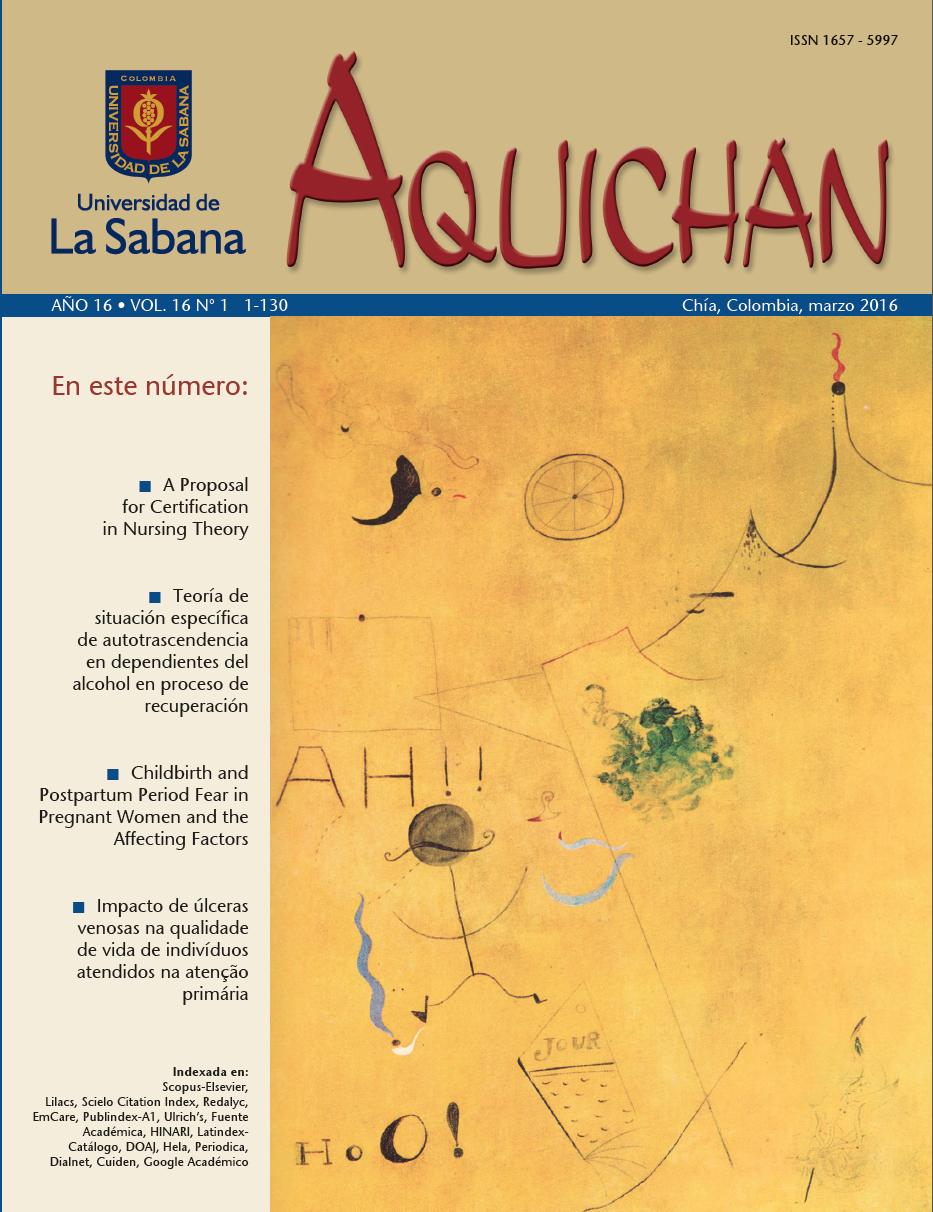Validity and Reliability of the Spanish Version of the “Self-Efficacy Measure for Sleep Apnea (SEMSA)
Keywords:
Sleep apnea syndrome, self-efficacy, validity, reliabilityAbstract
Objective: Determine the validity and internal consistency of the Spanish version of the "Self-Efficacy Measure for Sleep Apnea (SEMSA) designed by Weaver et al. Materials and methods: This is a descriptive methodological study that determined facial and content validity with a panel of experts and a bilingual scholar. The construct validity and internal consistency sample was comprised of 151 patients with sleep apnea- hypopnea syndrome who were using continuous positive airway pressure (CPAP) as treatment. Results: Facial validity showed a higher rate of acceptability in all three categories evaluated. As for content validity, 23 items had a satisfactory level of acceptability and the remaining four were subject to change. Exploratory factor analysis of construct validity identified three factors with 52.2% total variance explained. Internal consistency using Cronbach’s alpha test was 0.90 for the total scale and 0.84 for each major dimension. Discussion: Total variance explained was higher compared to the original study, and Cronbach’s alpha was similar in both the total and dimensional scale. Conclusion: The Self-Efficacy Measure for Sleep Apnea - valid and homogeneous in the Colombian urban context - is an important and objective tool to gauge the prospects for patients with sleep apnea-hypopnea syndrome compared to the associated risks, the benefit of the treatment and compliance in the use of positive pressure (CPAP), despite the perceived barriers.
Downloads
Published
How to Cite
Issue
Section
License
1. Proposed Policy for Journals That Offer Open Access
Authors who publish with this journal agree to the following terms:
- The journal and its papers are published with the Creative Commons License Attribution-NonCommercial-NoDerivatives 4.0 International (CC BY-NC-ND 4.0). You are free to share copy and redistribute the material in any medium or format if you: give appropriate credit, provide a link to the license, and indicate if changes were made; don’t use our material for commercial purposes; don’t remix, transform, or build upon the material.





